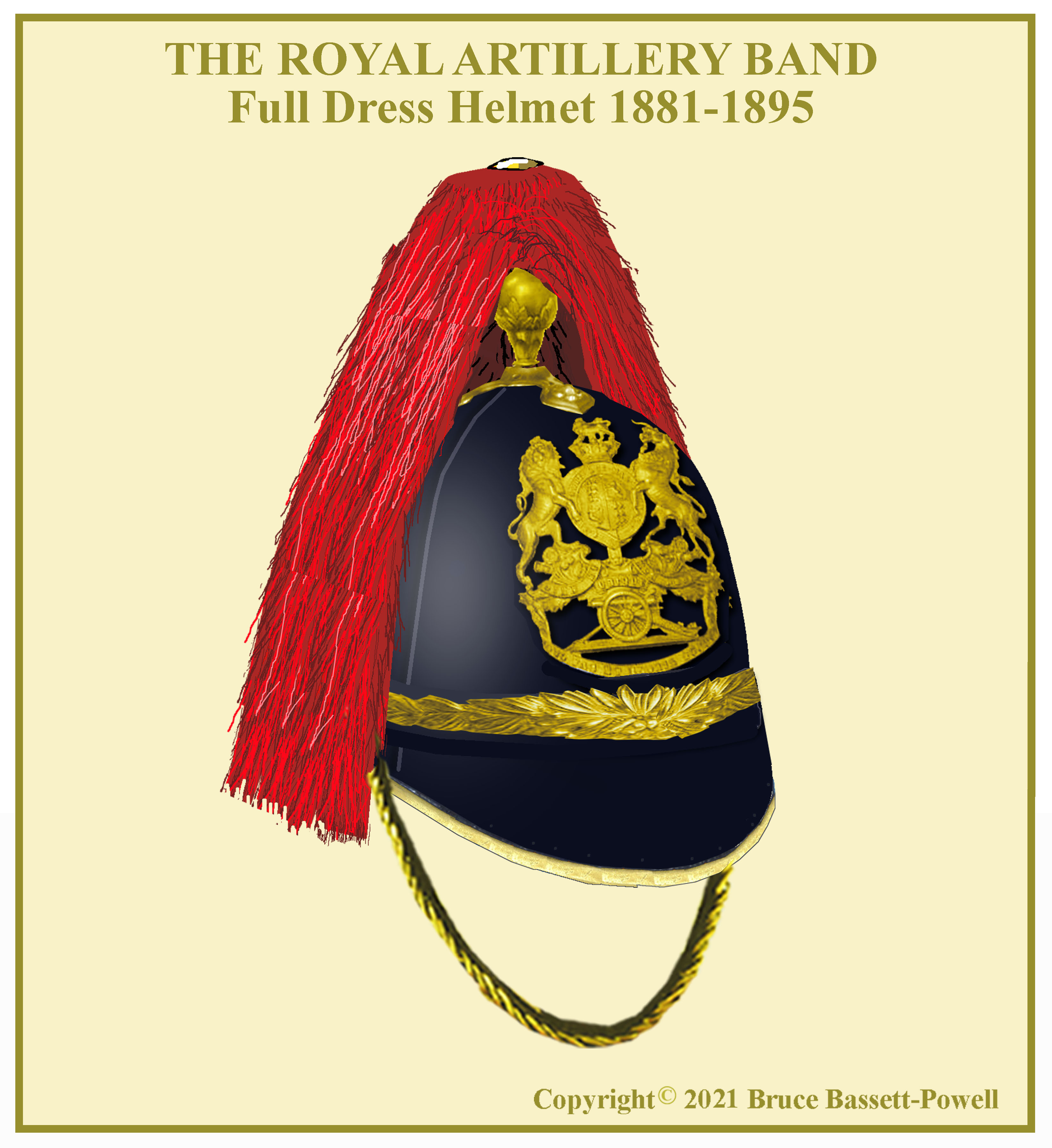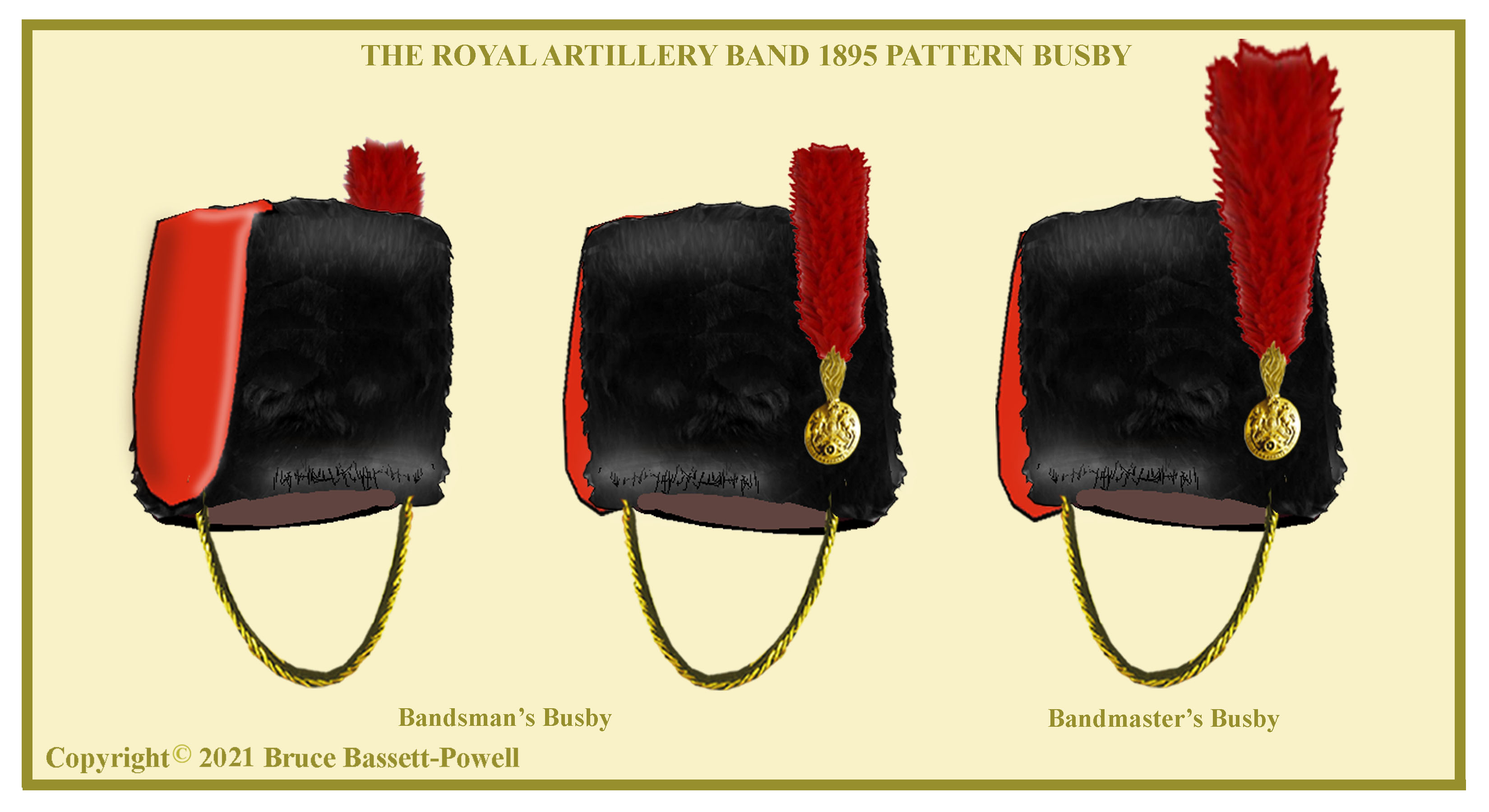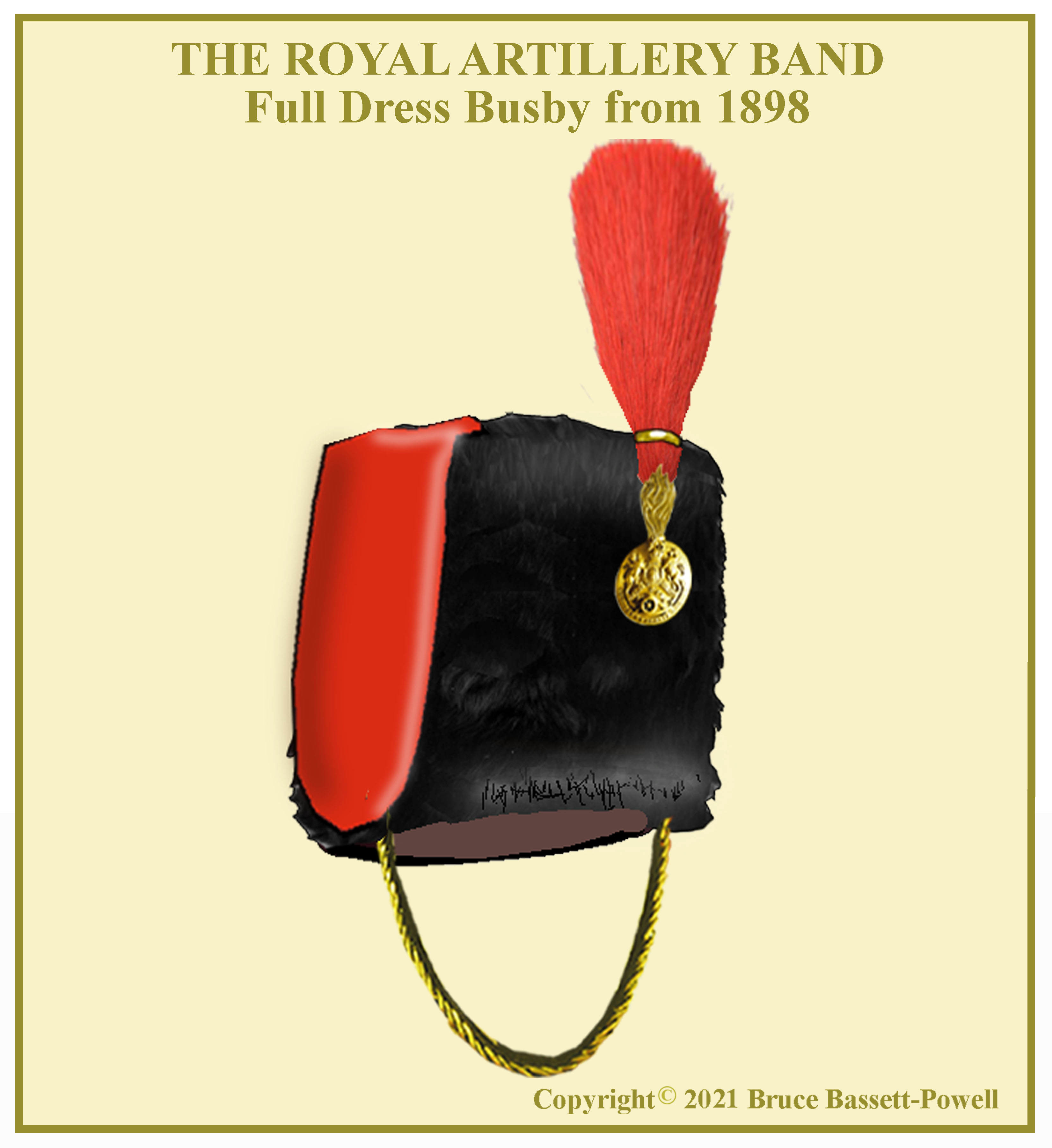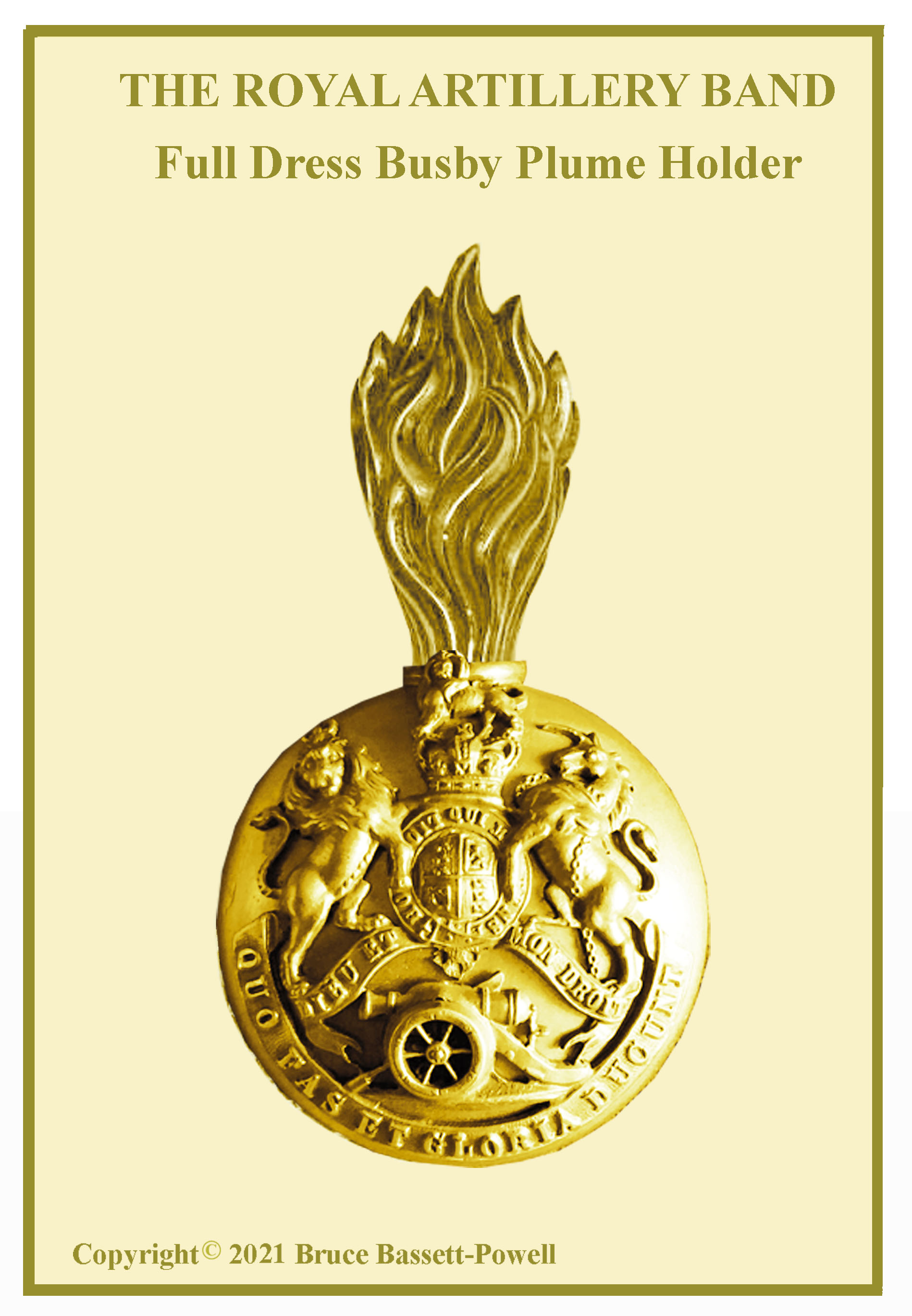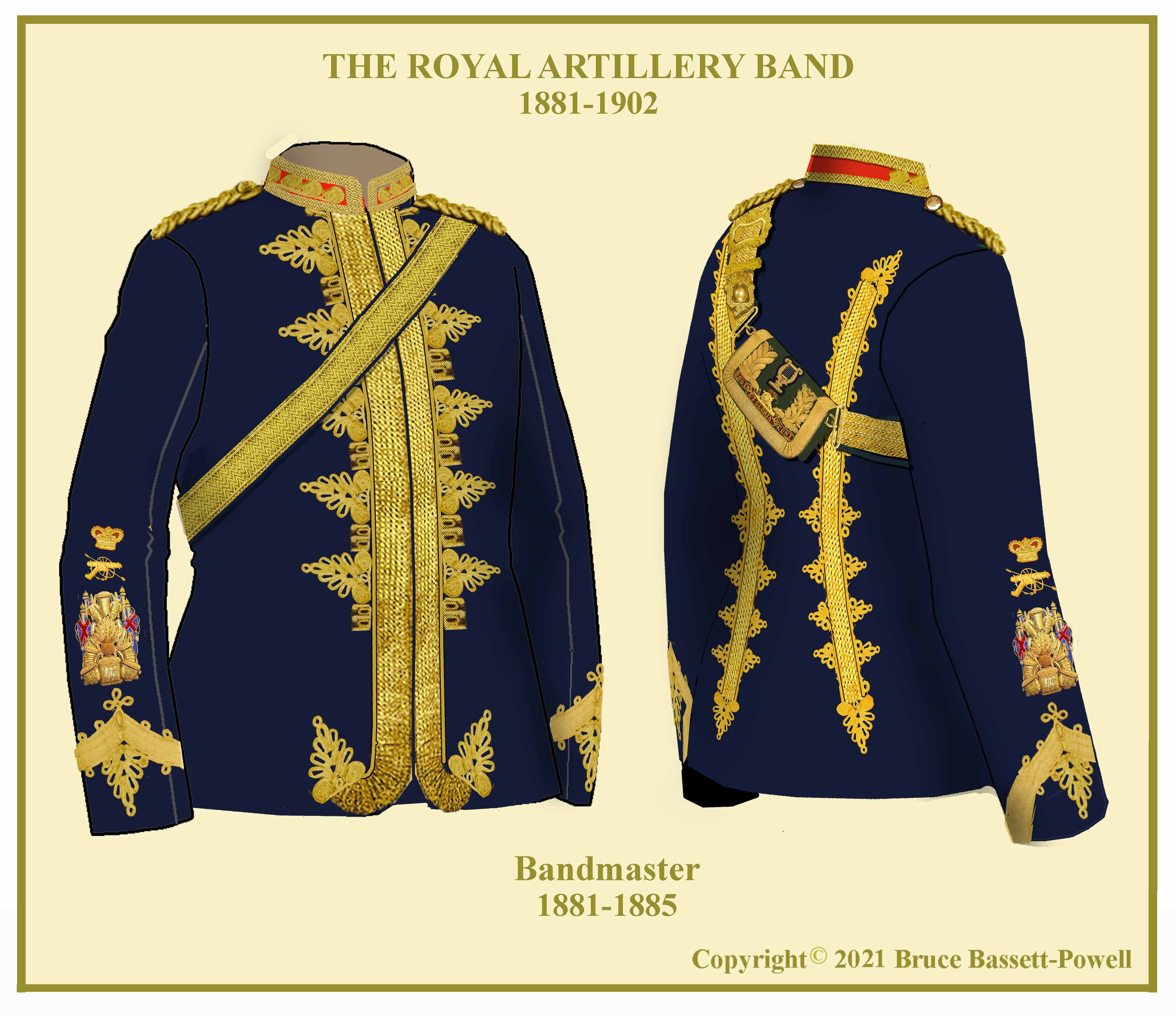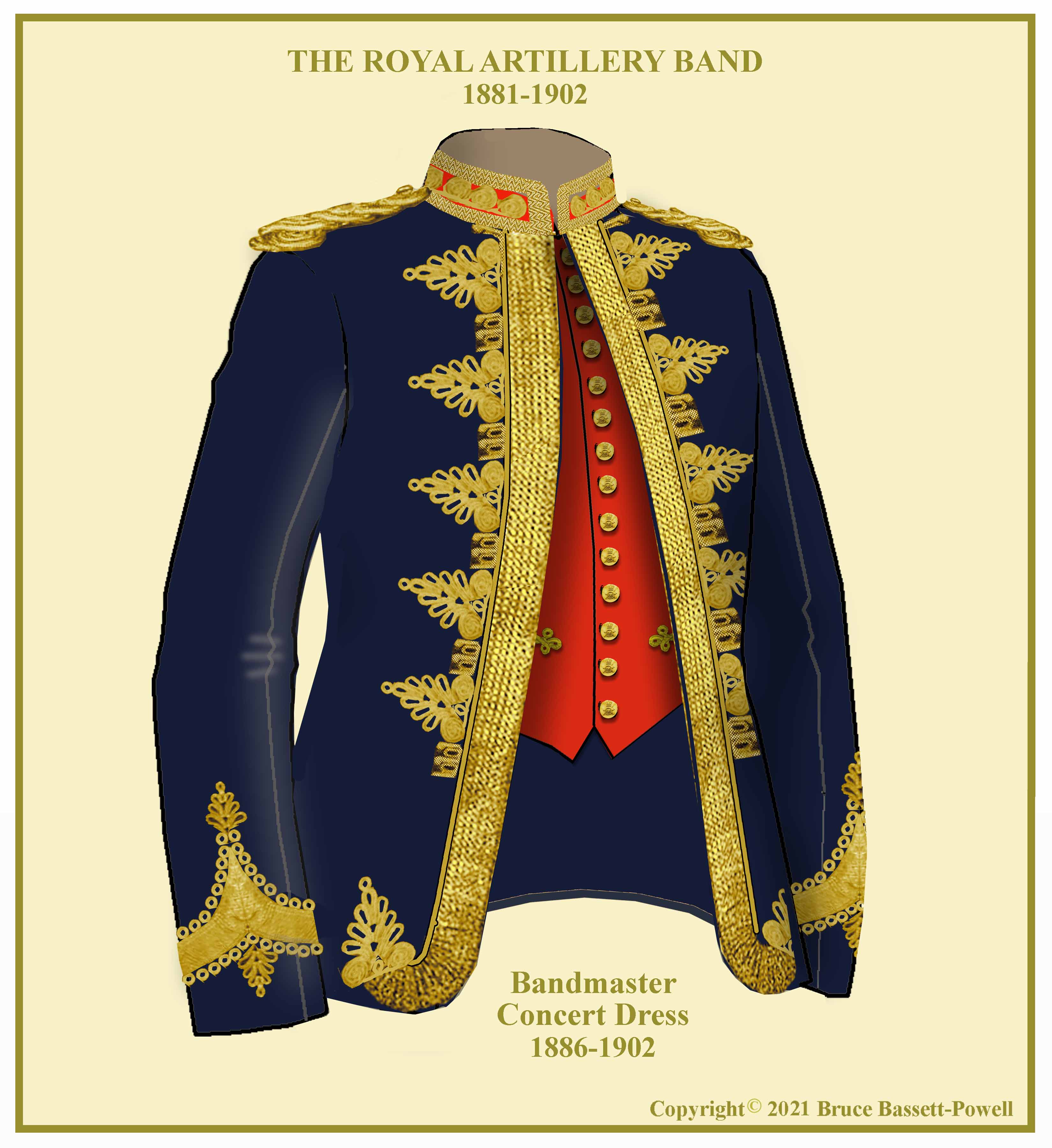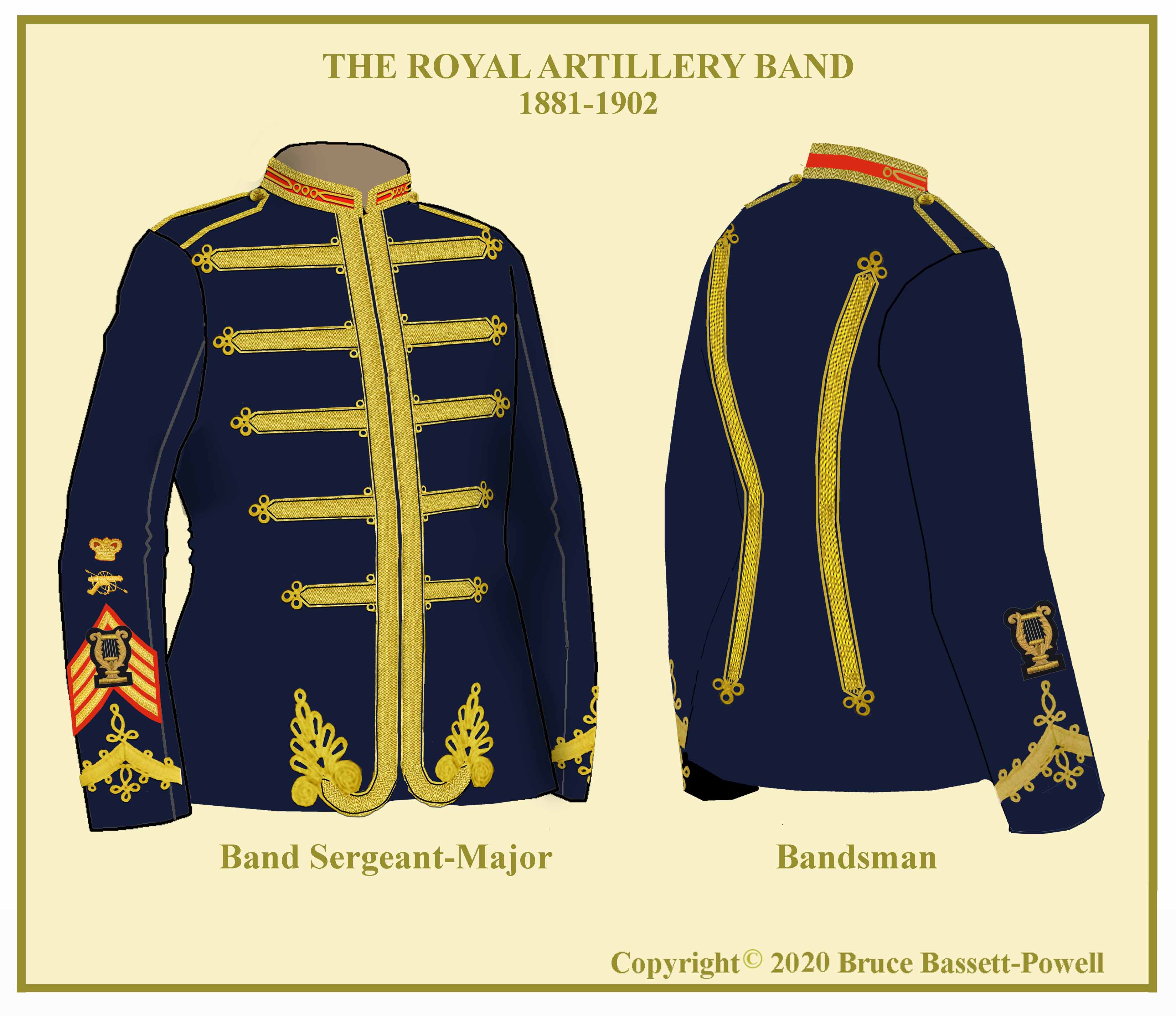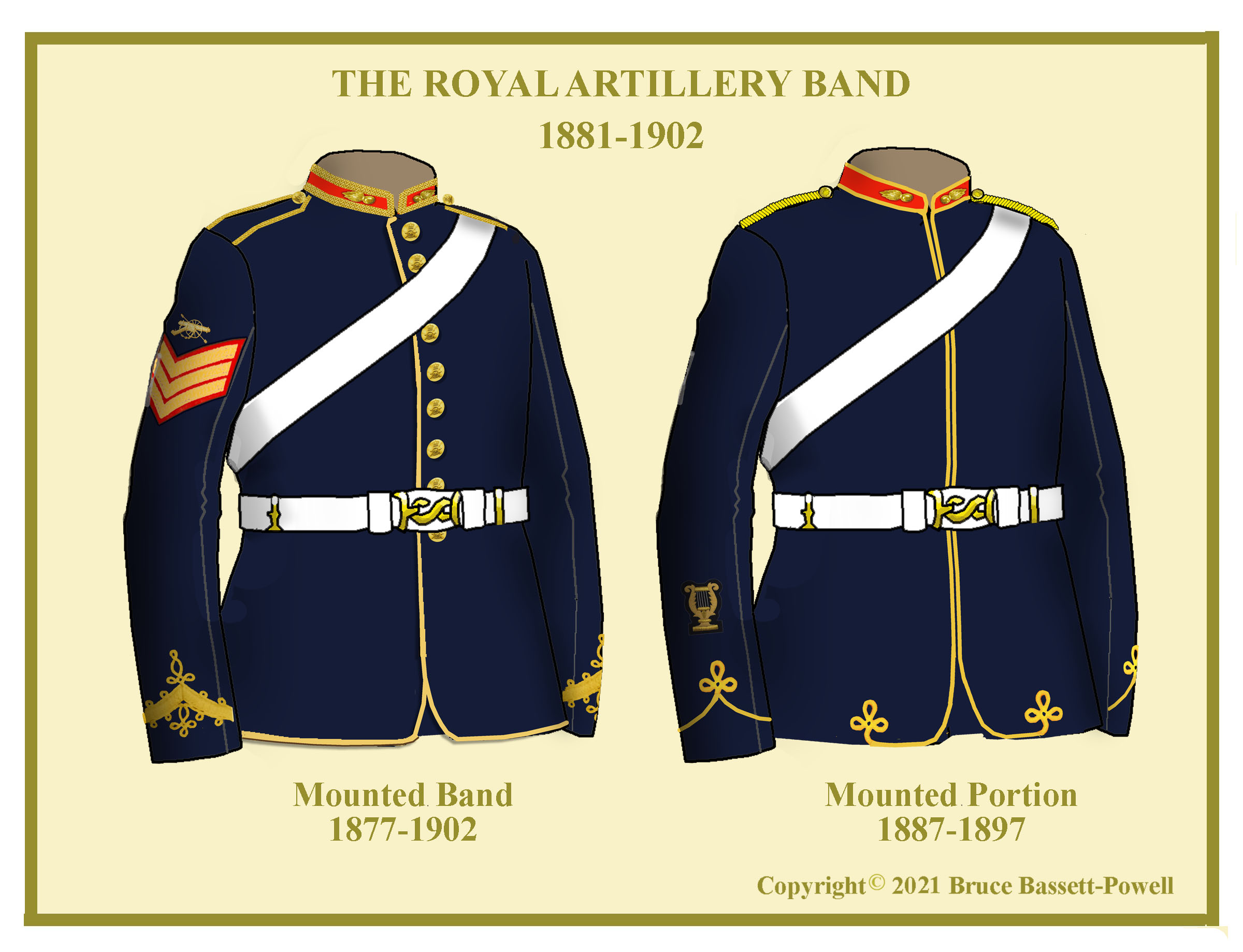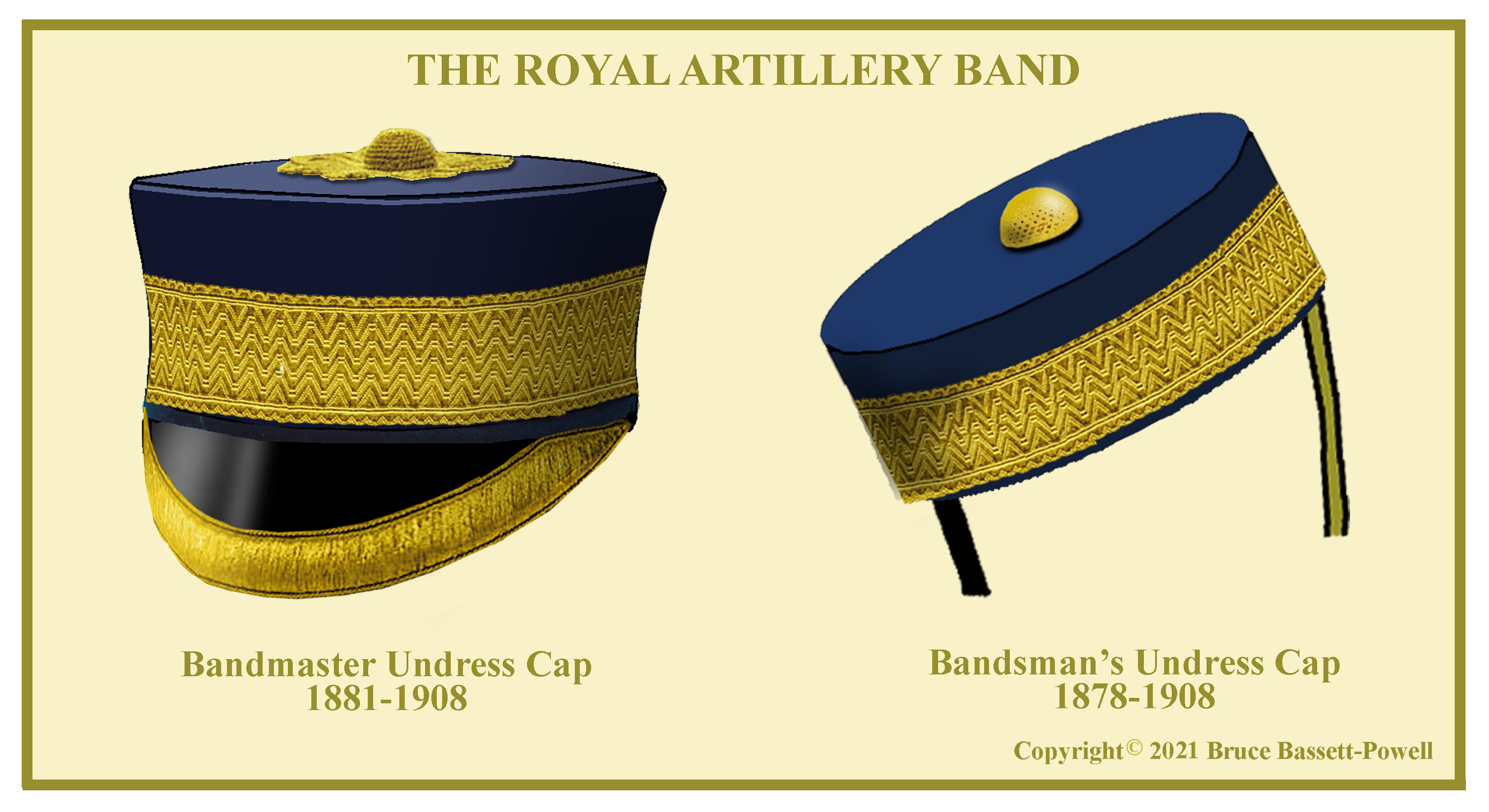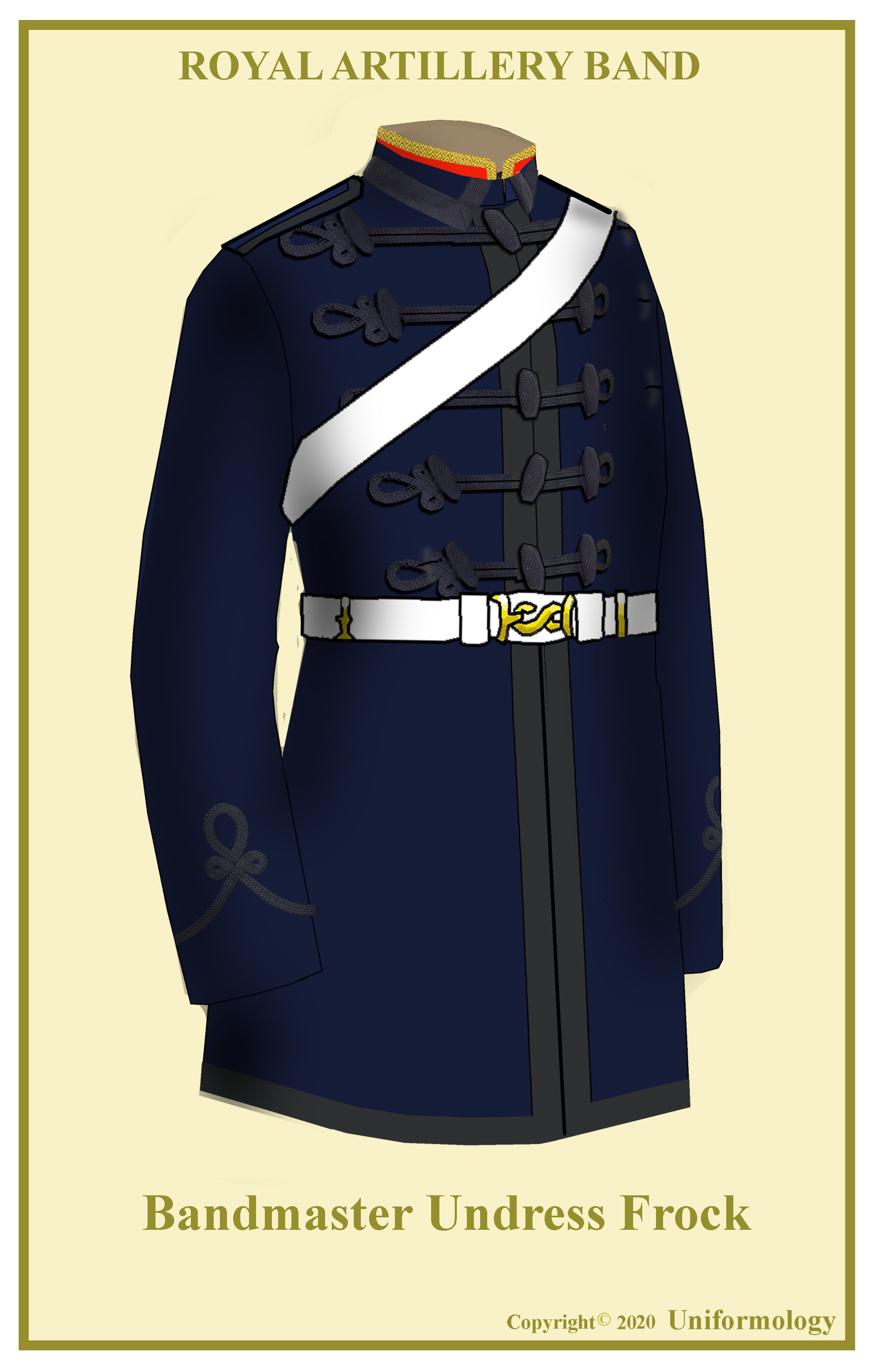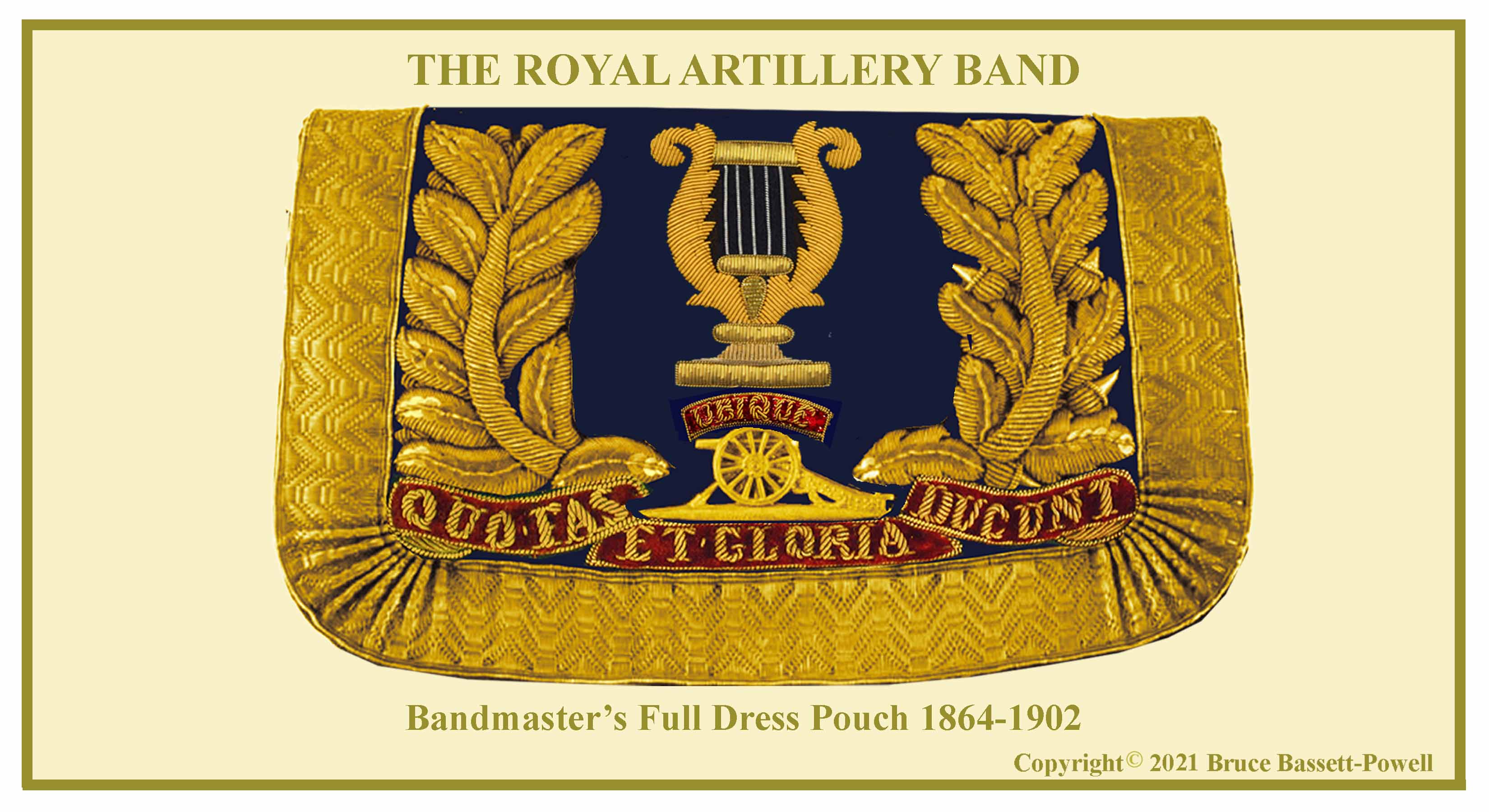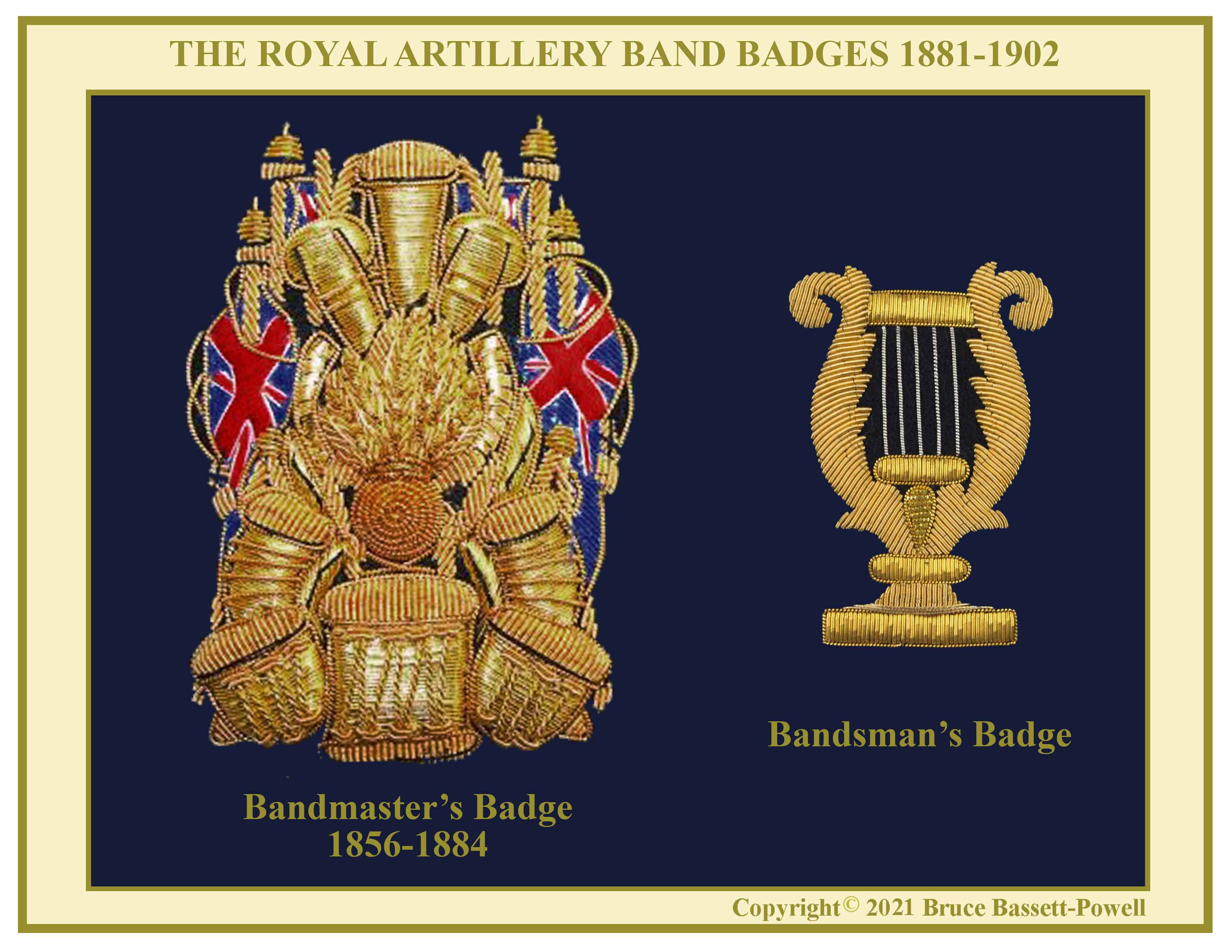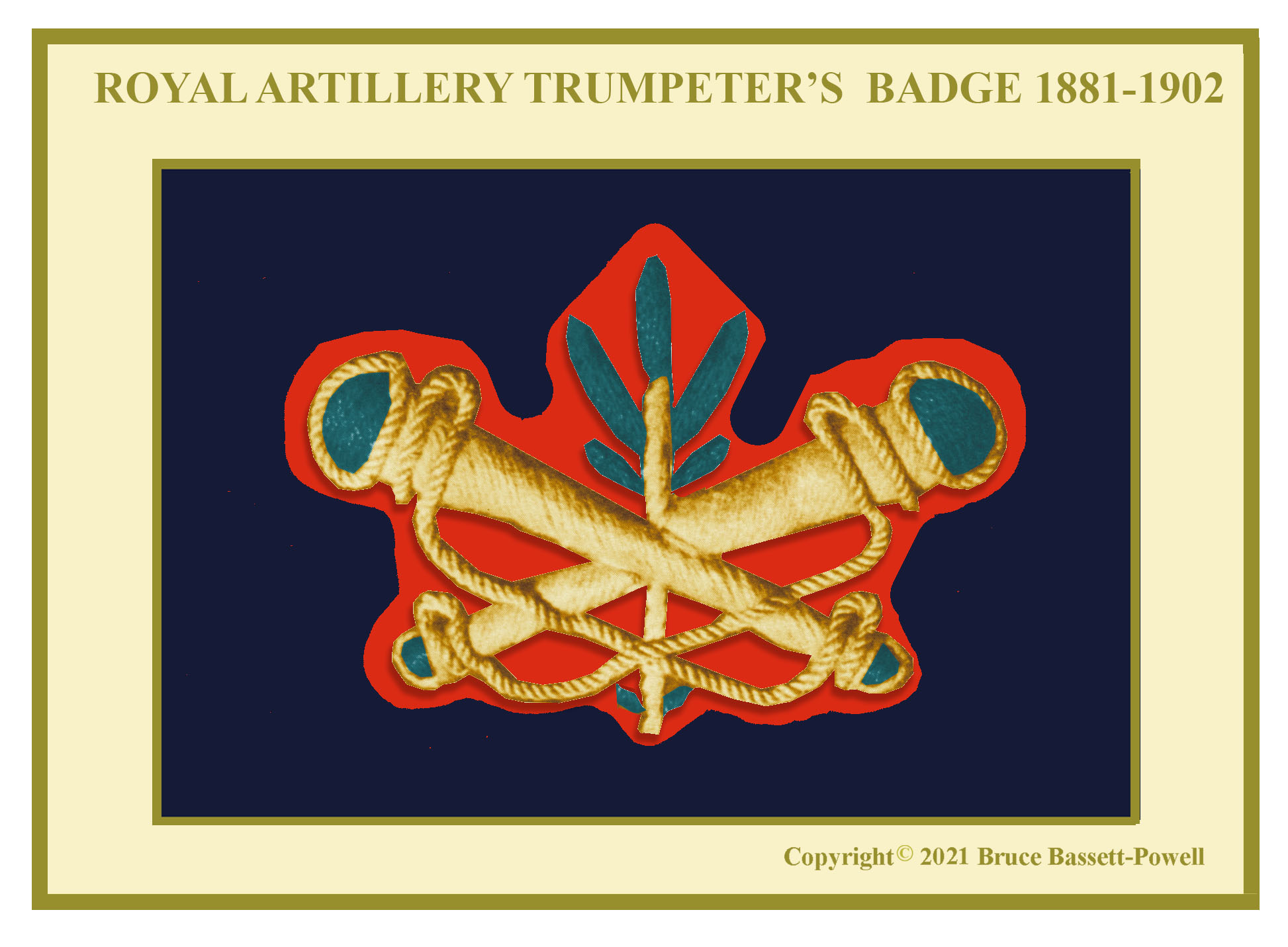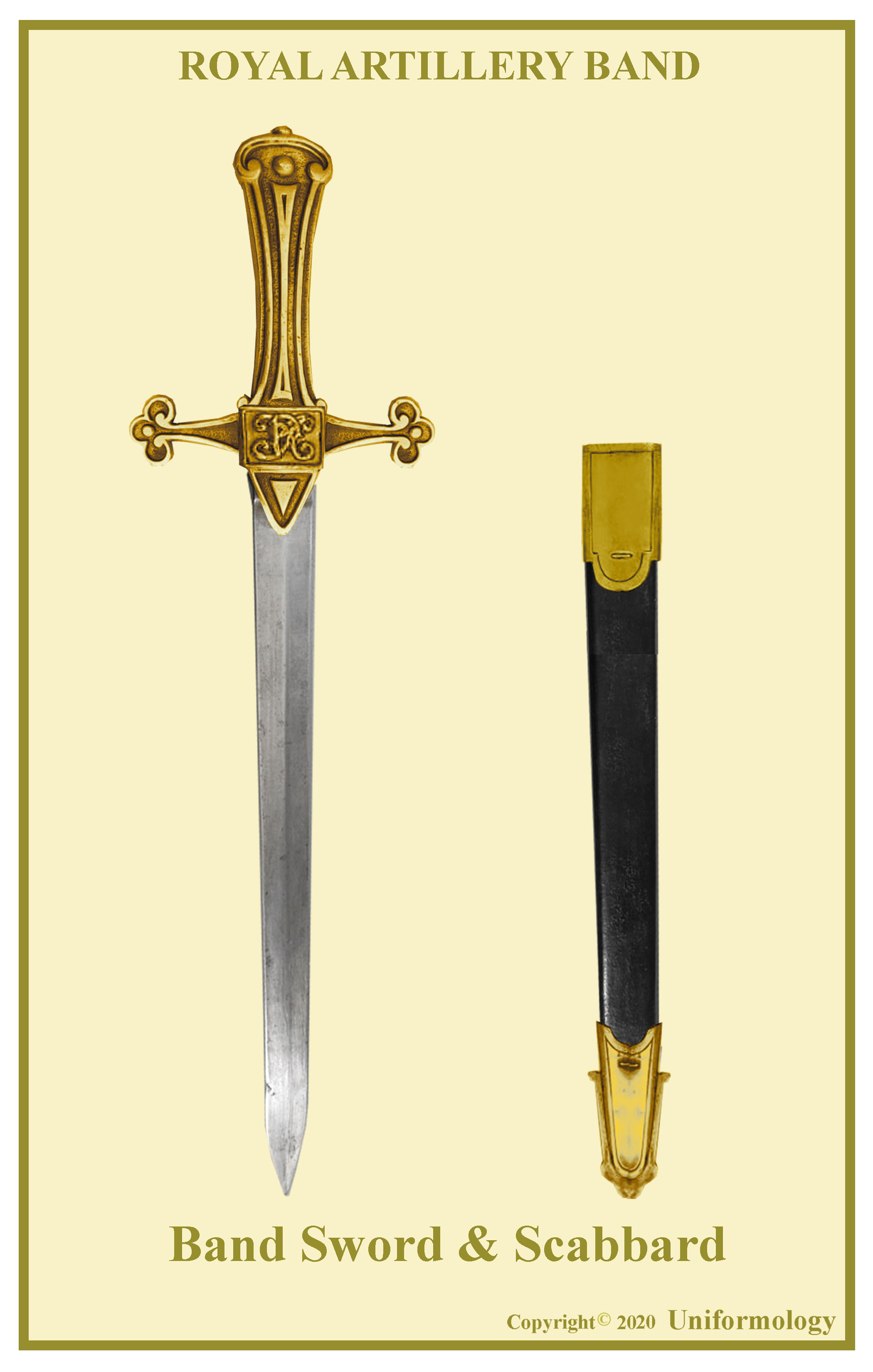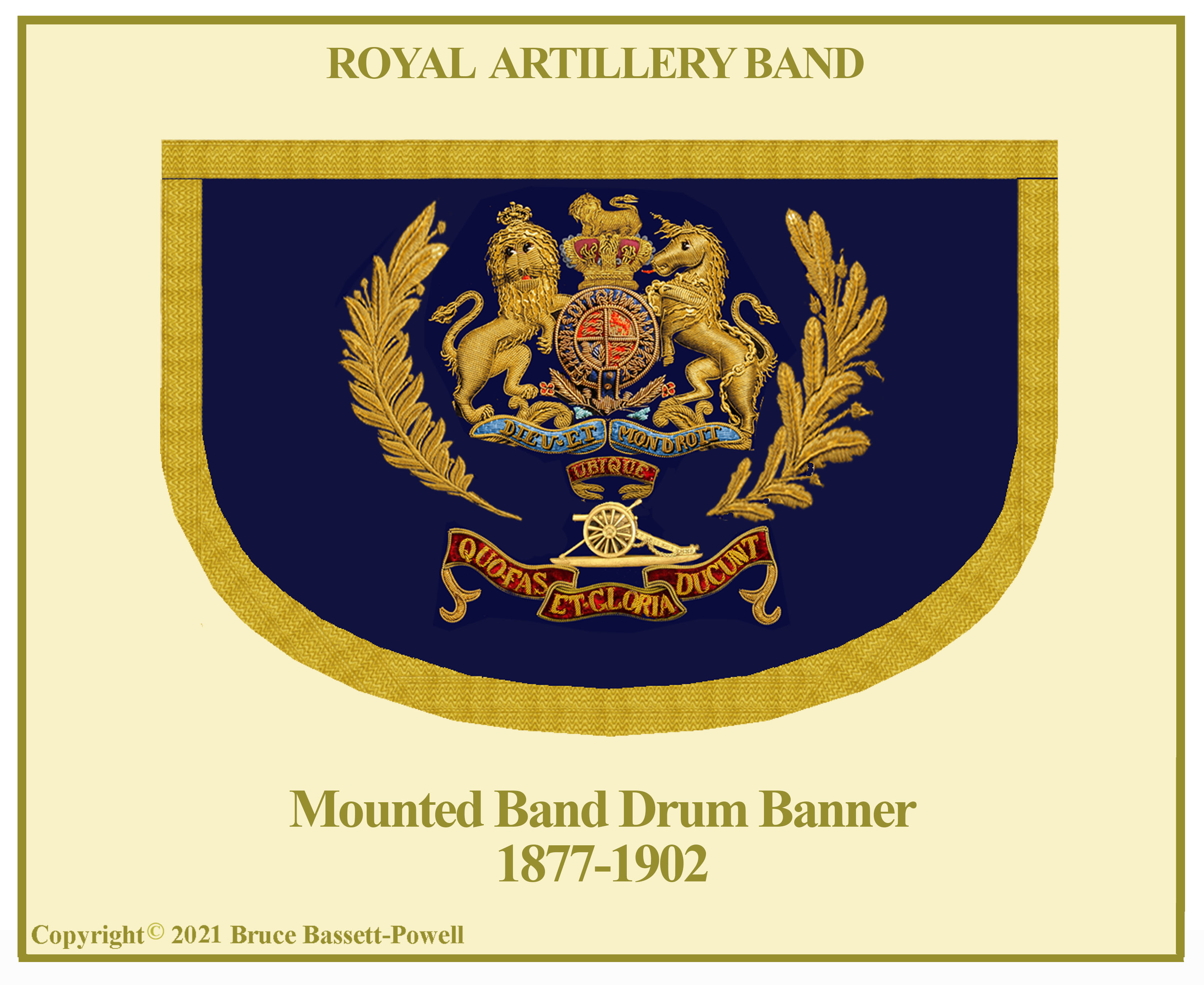UNIFORMS, ARMS & EQUIPMENT - ROYAL ARTILLERY
THE ROYAL REGIMENT OF ARTILLERY 1881-1902
THE ROYAL ARTILLERY BAND
The Royal Artillery band is surely one of the most ancient and celebrated military bands in the world. There were supposedly drums and fifes attached to the English Artillery train during the siege of Calais in 1557. An artillery band is thought to have existed at Woolwich during the reign of Charles II. Chariot mounted Kettledrums drawn by white horses were known in Ireland in 1689 and, more notably in the Low Countries during the Seven Years War. A wonderful painting by David Morier clearly illustrates one of these chariots in 1757.
The Band, formed in 1762, consisted of eight musicians at first and it’s official existence during its early years was a matter of some controversy. A band apparently went to America in 1770 but it’s return was never noted. By 1800 the band was firmly established and was present at many Royal functions as their reputation grew. It must be said that most of the members including the Masters, were foreign. The band became well known as the century progressed and gradually home born members became members, including the Bandmaster in 1810. In 1820 the Royal Artillery Band was the only army band paid for by the annual estimates. By 1845 the band consisted of 47 musicians and in 1854, the band was considered the premier band of the army having played at such functions as the Crystal Palace opening and the funeral of the Duke of Wellington.
In 1857 the Royal Military School of Music at Kneller Hall was established. This was established to train bandmasters for the entire British Army. At the same time the Royal Artillery Band came under the auspices of a Band Committee which, henceforward would govern the accounts, activities and the uniforms of the band.
By 1881, the bands of the British Army were regulated to be either “Regimental” or “Staff” bands. The Royal Artillery (as well as the Royal Engineers) came under the latter designation.
This gave them more flexibility and allowed them to appoint bandmasters. A regulation had been made that all Bandmasters should be British, which as we will see, was ignored by the RA Band committee.
In 1854, James Smyth had been appointed Bandmaster and had maintained and even enhanced the reputation of the band. He decided to retire in 1880 and after a year with an acting bandmaster (Albert Mansfield) a new bandmaster was appointed. This was Cavaliere Ladislao Joseph Philip Paul Zavertal. He was an Italian national of Bohemian origin with a successful career as a composer and conductor. Under his leadership the band would reach new heights of influence and perfection. He would also have an impact on the dress and accoutrements of the band.
The Uniform of the Band
The early dress of the band followed the practice of all British regiments. The jacket or coat was scarlet with blue facings and followed the general style of dress. In 1812, the band was in white coatees and blue facings with white breeches and black gaiters. By 1820 it had already exchanged the Belgic shako in the for the regency bell topped type. In 1830 the trousers became light blue and the coatees adorned with more gold lace. The more sombre Victorian atmosphere brought forth in 1847 a blue double breasted coatee with scarlet collar and cuffs including a bearskin cap with scarlet plume. It was in 1856 that the Royal Artillery Band would adopt a dress that, with few differences, last them for the next 80 years. This is the uniform that will be described in detail here.
The Full Dress Headdresses.
In 1856, the band had adopted the busby with red bag along with the rest of the regiment. The plume was in a brass holder, worn on the left side with a scarlet horsehair plume. In 1878 when the infantry, artillery and other branches took the spiked home service helmet into wear, the committee felt the band should also adopt it. The helmet was surmounted by a brass ball from which a scarlet horsehair plume fell to the bottom. The front of the helmet band was replaced with a brass laurel leaf band and the front and rear peaks had a brass edging.
The bandmaster wore an officer’s pattern helmet with the same fittings as the band except in gilt or gilding metal. Some of the committee members were uncomfortable with the look as it seemed too “Prussian”.
In 1895, the committee decided on a return to the 1856 busby but with a scarlet feather plume. As this tended to attract dirt and disfigurement it was changed to horsehair in 1896. The bandmaster’s plume was considerably taller than the rest of the band. In 1898 it was decided to move the plume from the side to the front. This is the headdress that has been worn by the band to this day.
The Bandmaster’s tunic was introduced in 1856. It was elaborately laced on the front and rear. There were two wide bands of regimental lace down the front curled upwards and terminating with a cone of narrow lace. On each side of the front, there were five of these lace cones separated by a thin lace figure. The collar bore half inch lace top and bottom ornamented with gold lace loops in between. On the cuffs were two inverted chevrons of one inch gold lace with figuring above and below terminating in a small cone below and a crow’s foot above. On both sleeves was the bandmaster’s large badge of office which was a trophy of drums and flags (described below) surmounted by a crown and gun. In 1881, this badge was only worn on the right sleeve. The last to wear it was Albert Mansfield, the acting bandmaster. The rear of the tunic was similarly laced on the seams with smaller versions of the cones on the skirts. He wore a gold lace pouchbelt with pouch described below.
The Full Dress Tunic
When Ladislao Zavertal became bandmaster in 1882, he petitioned the committee for a change in dress which would remove the bandmaster’s badge on the sleeve. This was granted in 1884 and later he was able to dispense with the gun and crown as well. At the same time, he was able to enlarge the decorations on the cuffs to replace the badge. He was considered quite temperamental and required special velvet coverings for his concert chair. He again asked the committee to wear shoulder cords of the same pattern as the Royal Engineers, which was also granted. In 1891 he asked to wear his tunic open at concerts and wear a scarlet waistcoat. Again this was approved and later he would eventually wear the regimental mess waistcoat. In 1898, he was appointed “Honorary” Second Lieutenant and would wear that dress uniform until his retirement in 1907.
The tunic worn by the band from 1856 was naturally subdued in comparison to the bandmaster. The collar was scarlet, and the tunic was fastened by hooks and eyes. The front was decorated by two ¾ inch lace bands down each side with tracing either side and terminating in upward pointing cones. Down the front were five similar lace bands spaced in diminishing widths down to the waist. Each pointed end of the band terminated in a crow’s foot. The rear seams of the tunic were similarly adorned. The collar had ¼ inch lace top and bottom with lace figuring inside. The pointed cuffs had ½ inch lace chevrons with lace loops above and below. All bandsmen wore the regiment’s unique gold Lyre with silver strings on their right sleeve. Sergeants wore the Lyre with gun above their chevrons and band sergeant-majors wore four inverted chevrons with the Lyre on the chevrons and gun and crown above. The Band SM was also meant to have some extra lace on collar and cuffs, but I have seen no examples. This tunic was worn from 1856 to 1939.
Trousers
The blue trousers had gold stripes down the sides for the bandmaster and band Sergeant-Major. The rest of the band had scarlet stripes. The gold stripes were abolished in 1902.
The Mounted Bands
The The Mounted Band was formed at Woolwich in 1877 and the dress was much simpler than the regular band. The helmet was the same as the rest of the RA band with red plume and the blue tunic had a scarlet gold laced collar and front laced all round in gold cord along with the rear skirt seams. There were nine brass buttons down the front and the collar had brass grenades on either side. A white waist belt was worn along with a white cross belt and pouch at the rear decorated with a brass cannon. Cavalry breeches with scarlet stripes were worn.
Due to the huge number of troops stationed in Aldershot, the band was split into two with one half (known as the mounted portion) organized in Aldershot. The mounted portion wore the undress tunic of the main band. It was fastened with hooks and eyes and edged with gold lace. On the skirts the lace was formed into crow’s feet halfway across each skirt. The cuffs bore plain gold loops ending in crow’s feet. This tunic was abolished in 1897 and all adopted the original uniform of the mounted band. In 1895, the bands had adopted the busby along with the changes in plume position in 1898. The mounted band at Woolwich had by this time been reduced to twelve players and was amalgamated with the mounted portion headed by the Kettledrummer.
The bandmaster wore a staff cap with gold lace in undress and his frock had long skirts but was decorated on the torso with lace loops similar to that of the officers’ patrol jacket. A false gold lace scarlet collar was attached.
The undress uniform of the band has been described with the Mounted Portion of the band.
This was worn with a pillbox cap as worn by sergeants in the regiment.
The Band Master’s unique dress pouch was the same as that worn by officers in the regiment but the Royal Arms were replaced by the band Lyre.
The bandmaster’s badge was approximately five inches long and four inches wide. The design of drums, banners and trumpets was quite unique. It went out of wear when Bandmaster Zavertal, who disliked it for some reason, had it removed. The badge illustrated is the badge now (2021) used by the Drum-Major of the band and with the lack of an original example it is a speculation. However, it does conform to a description in Major N.P. Dawnay’s work on the subject of rank badges.
The Band badge worn above the cuff lace on the right also has been worn to this day unaltered.
There had been a Bugle band and a brass band since the early 1800s and there was a Drum-Major on and off until his position was abolished in 1862. In 1881 trumpeters of the Royal Artillery, both Field, Garrison and the Royal Horse Artillery wore no special uniforms or embellishment. They carried bugles in the foot branches and trumpet and bugle in the RHA. The cords were Royal mixed red, yellow and blue with tassels. The only indication was the worsted trumpet badge shown on a red backing.
The bandmaster and the band sergeant-major wore swords on parade and the band wore an infantry pattern band sword from 1856 and replaced by the 1898 pattern in that year.
The drum banners of the Mounted Band’s kettle drums from 1877 were patterned after the devices used on the sabretaches and pouches, with the usual changes in crown and survived until 1939. The Mounted Portion of the RA Band in 1886 had plain copper kettledrums with no banner.
NEXT:
THE
ROYAL MALTA ARTILLERY


